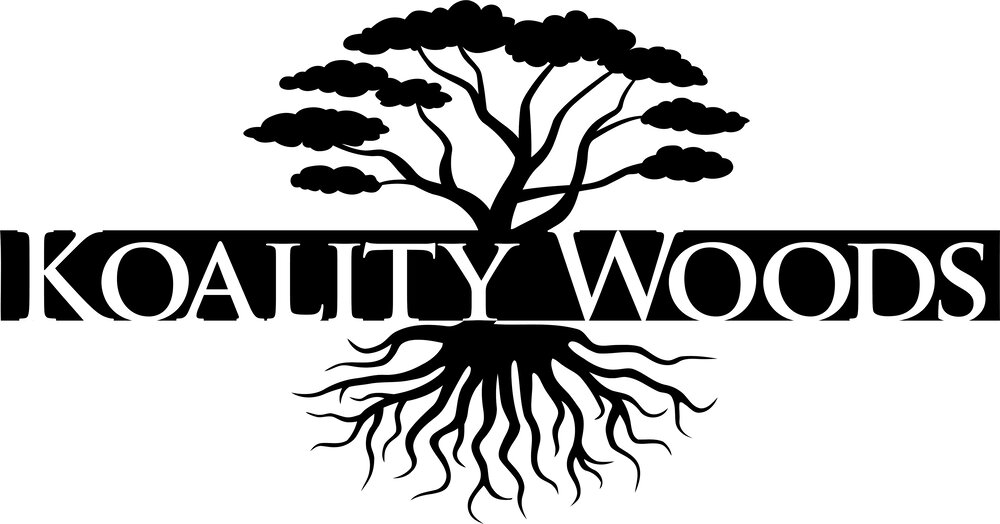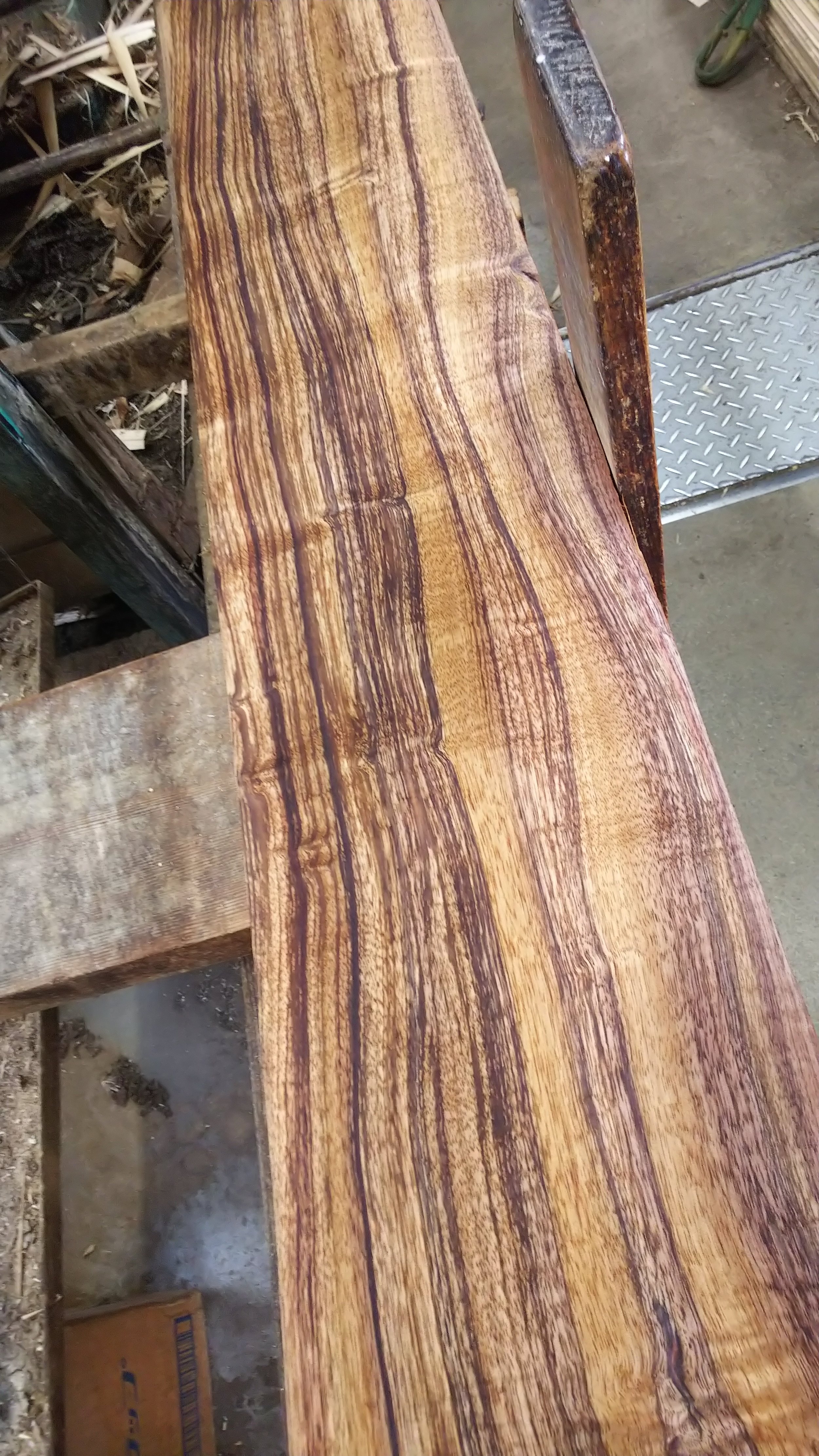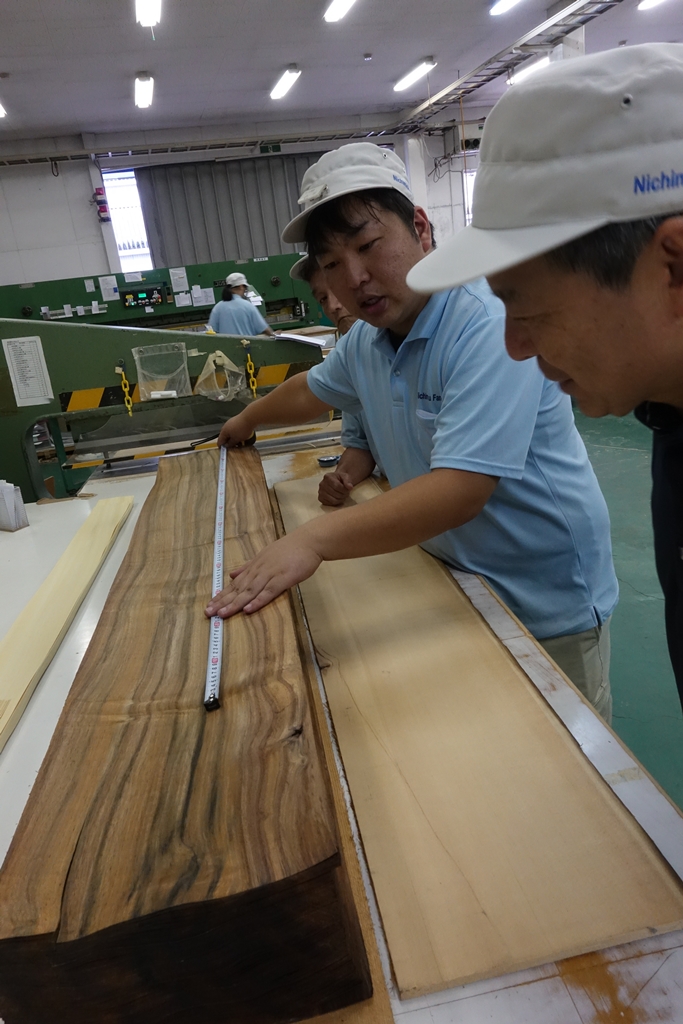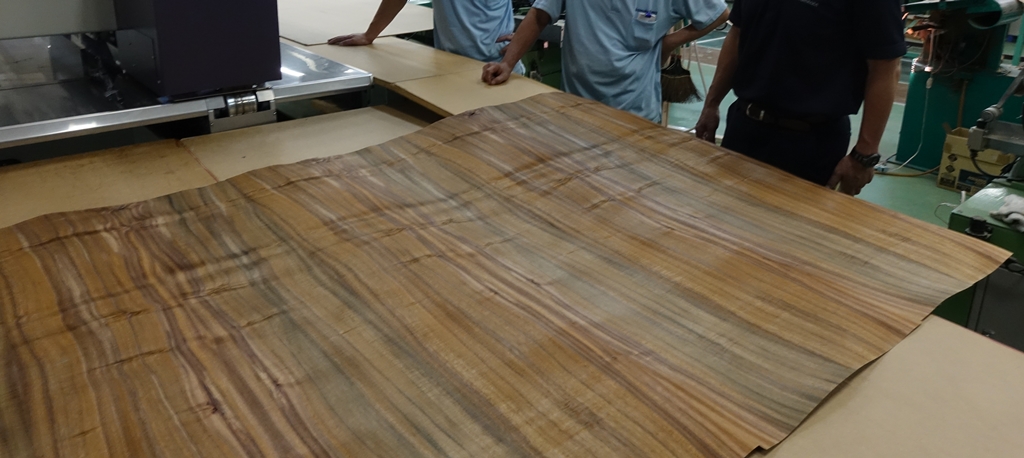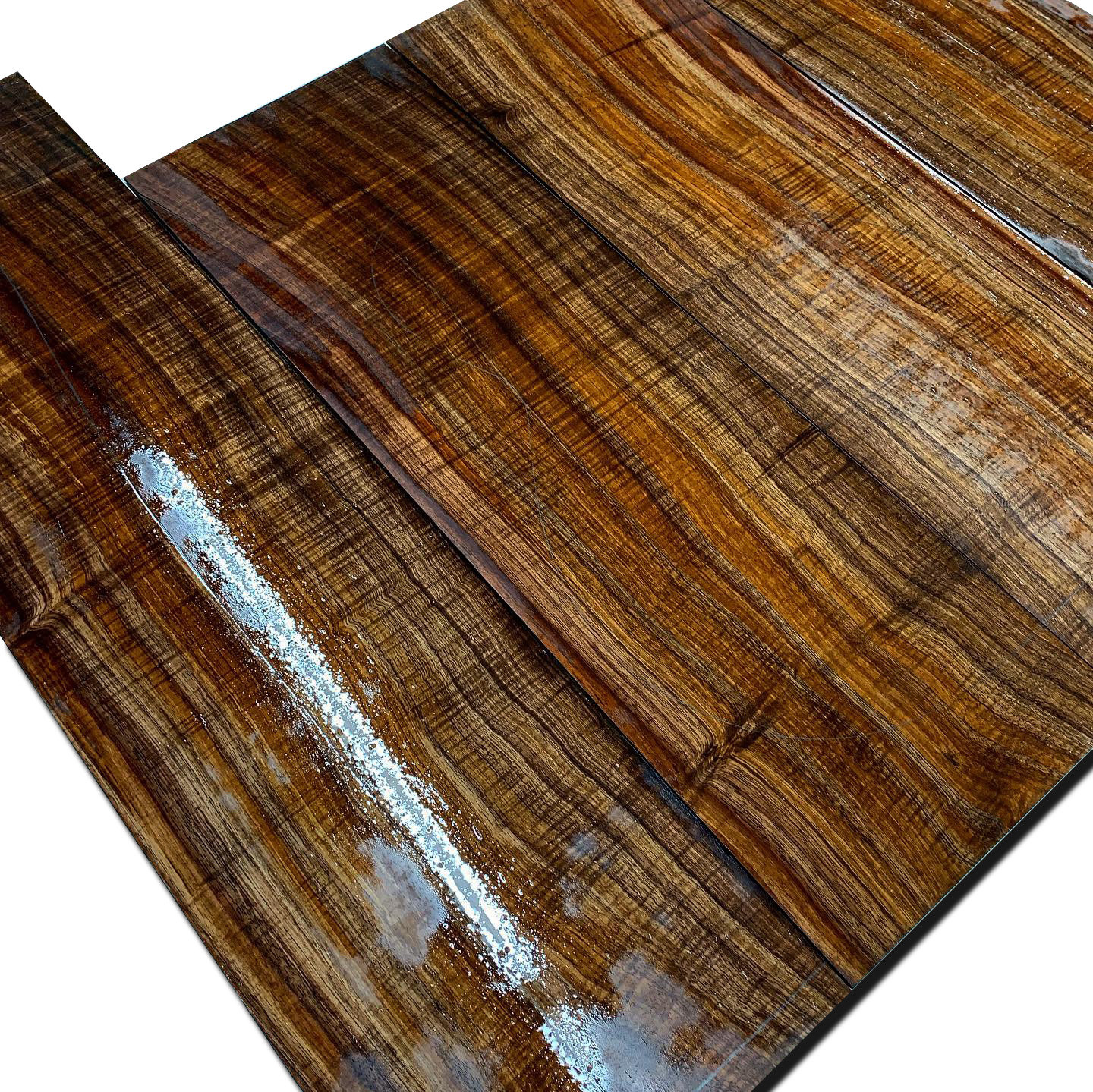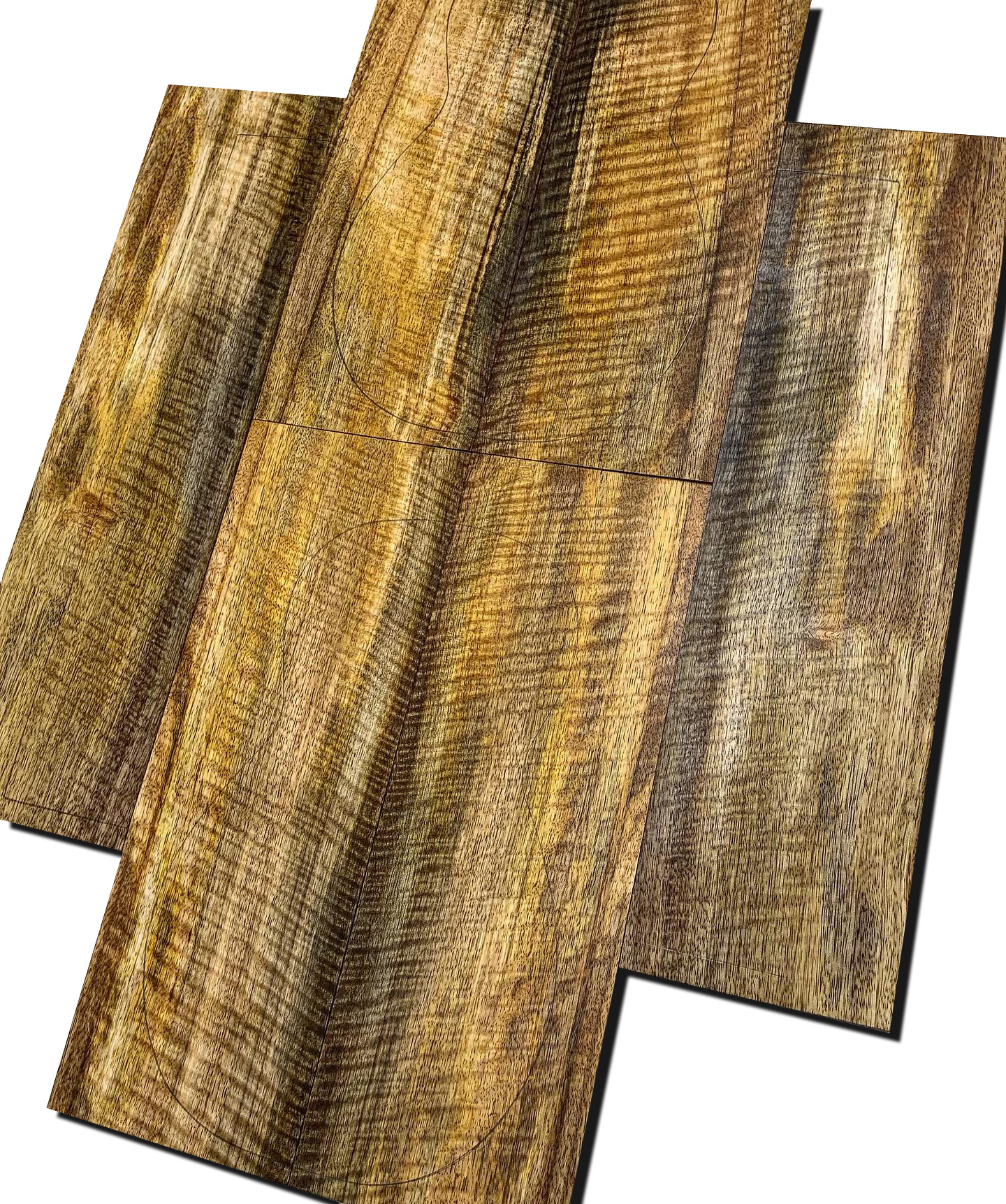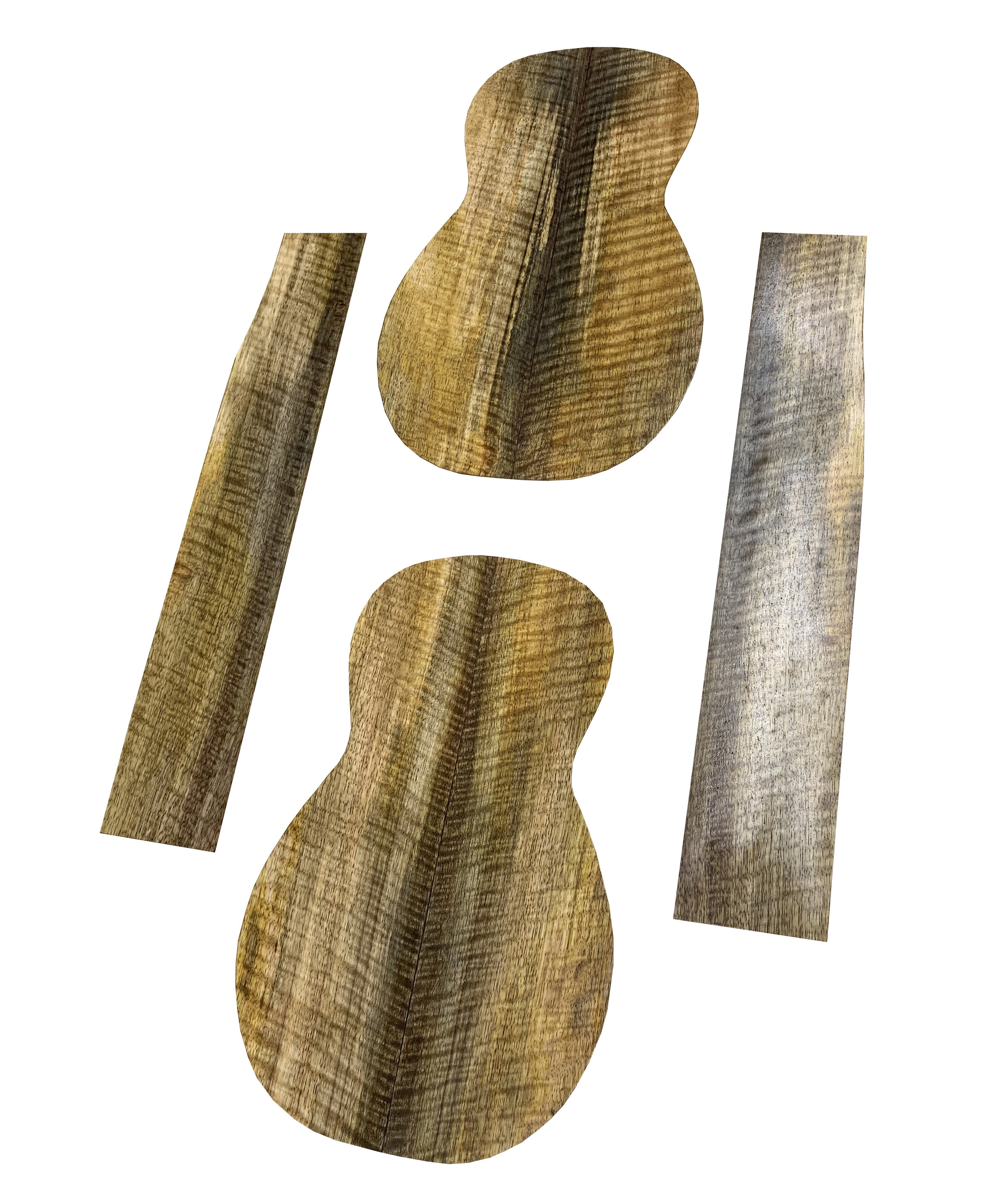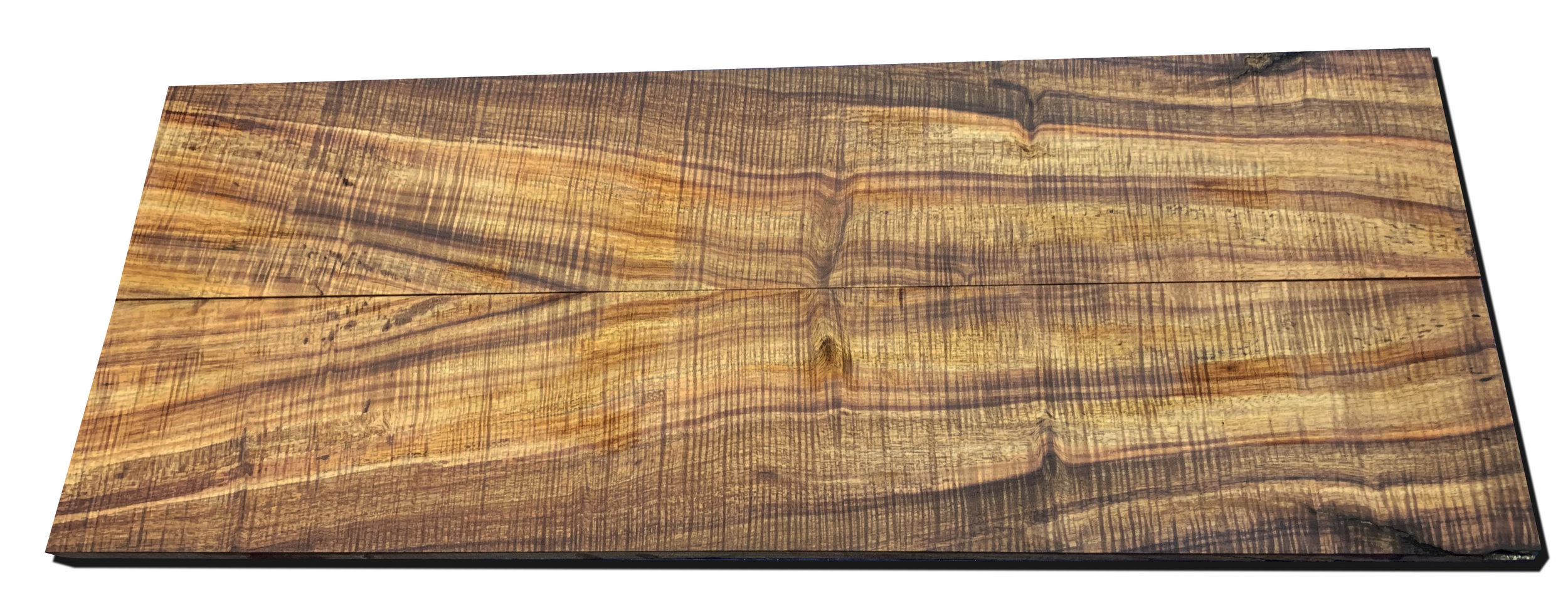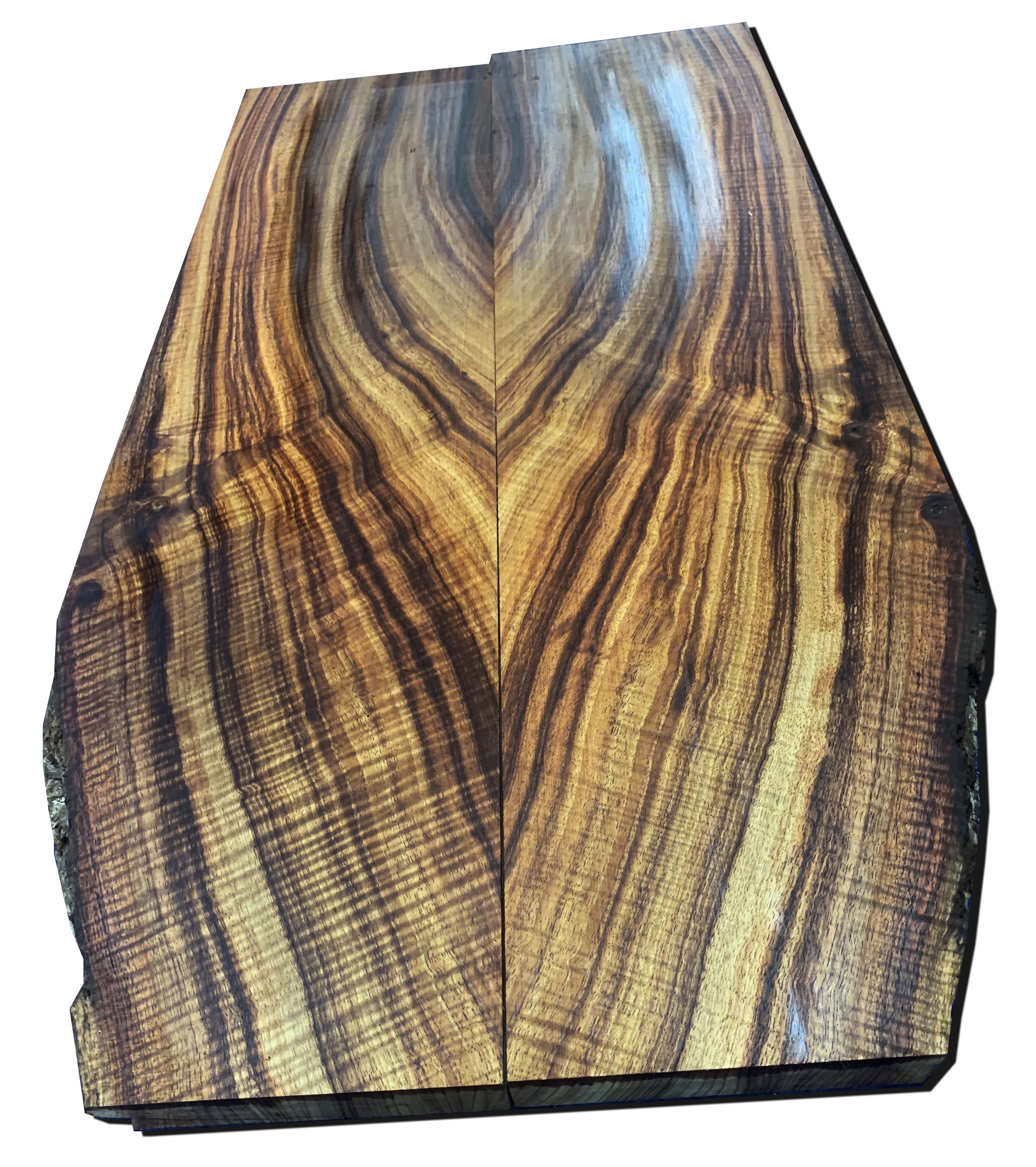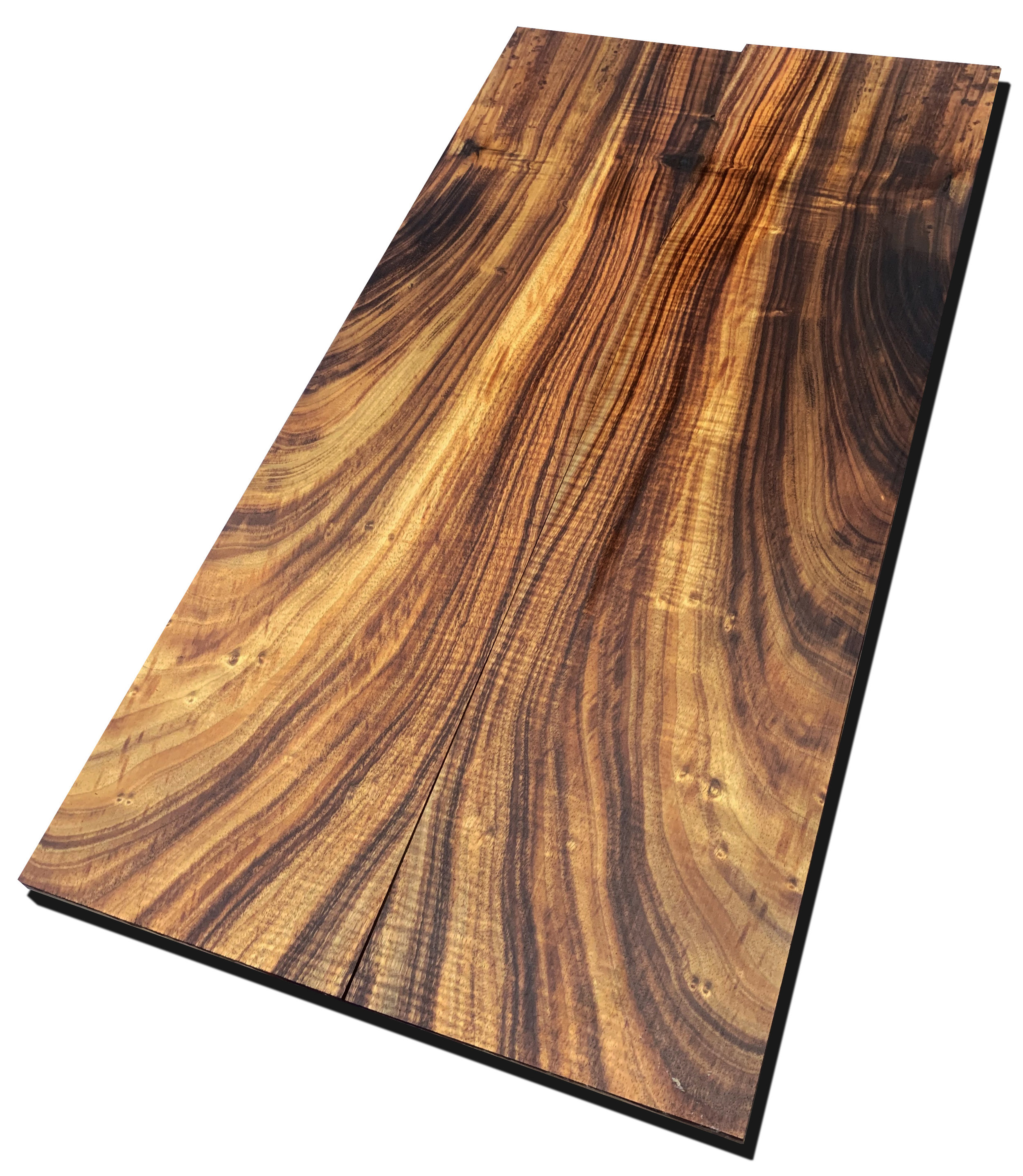We’ve been hard at work photographing and editing our recently listed Hawaiian Koa ukulele sets! We now have all our currently available Koa tonewood online and we’re excited to finally have the inventory available for everyone to pick and choose from. We pride ourselves on the “what you see is what you get” method of displaying our Koa tonewood and we hope you’ll find that it’s easy to know what you’re getting based on our method of photographing the ukulele and Koa guitar sets. You can find our ukulele sets here and if you’re looking for acoustic Koa guitar sets they’re here, or for electric guitar sets check here!
Now that we have our Koa ukulele and Koa guitar sets online, we’re shifting focus to wood stabilization. Stabilized wood is the process of removing all air from Koa wood blocks in a vacuum chamber and then soaking the wood in a polymer that solidifies when cured in an oven. By stabilizing the Koa wood and curly mango knife scales and pen blanks we create a wood product that is virtually waterproof that can be easily turned without fear of shattering the wood.
When the stabilized curly Koa knife scales are used as handles for custom knives, the wood can be washed without the normal problems associated with mixing wood and water together. You don’t need to fear rot or warping when you use our professionally stabilized curly Koa knife scale wood, and you don’t need to worry about splintering or cracking when turning with our curly mango and curly Koa pen blanks.
In the future we will supply stabilized curly Koa wood for call blanks and also stabilized curly Koa wood for pool cue blanks. We’re excited to provide people with these woods because it offers wood turners an excellent building material to choose when they’re looking to make custom Koa hunting calls and Koa pool cue blanks while also helping to maximize the use of all the Koa trees we salvage.
We plan to differentiate from other stabilized wood providers by using 360 Photography. We pride ourselves on the “what you see is what you get” presentation style and we’re really looking forward to giving our customers the most accurate view of the curly Koa knife scale, pen blank, call blank or pool cue blank that they’re purchase. By taking a picture of all angles of the curly Koa and curly mango knife scales and other stabilized wood, you’ll be able to get a full understanding of the amount of curl and texture of the grain of each piece of stabilized curly Koa and stabilized curly mango wood.
Finally, we recently purchased the Chopstick Master by Bridge City and are looking forward to making stabilized curly Koa chopsticks and stabilized curly mango chopsticks. As a wood supplier we don’t always get to make finished products so we’re excited to have a new project to build. The first prototypes of our spalted curly mango chopsticks are beautiful and we can’t wait to show everyone!
We still plan to produce more Koa wood ukulele sets and curly Koa guitar sets, but the next items to go online will be curly mango and curly Koa knife scales, pen blanks, hunting call blanks, pool cue blanks and chopsticks.
Thanks for reading and don’t forget to check our stabilized wood page for more details!
